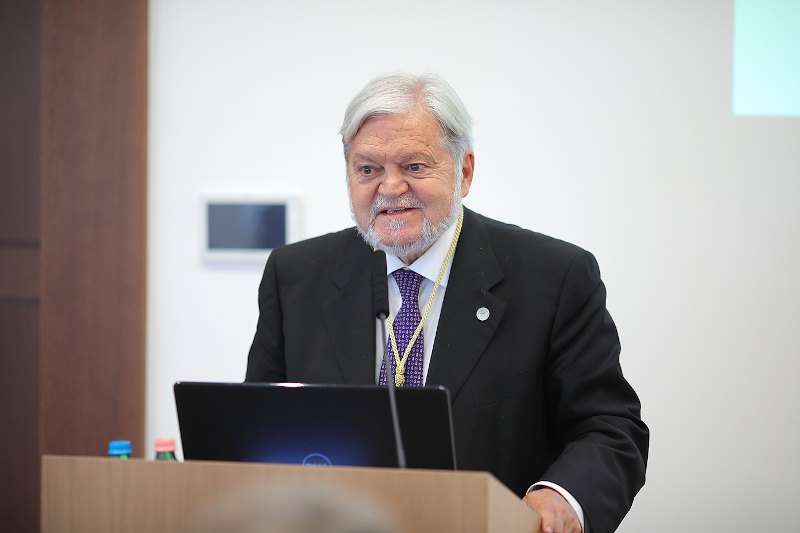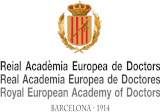Conference
Conference: “El necesario abordaje de la patología psico-social en la consulta al adolescente (11-19 años)”
Foment del Treball Building, Via Laietana, 32, third floor, office 311, meeting room of the RAED, Barcelona, 08003
Thursday, 16 May 2024
18:30 h
Conference by the Hon. Mr. Dr. Joaquín Callabed, Doctor of Medicine and Surgery
Event cost: Free
Format: Face-to-face
Inscription: Please confirm attendance at the Secretariat: secretaria@raed.academy or tel. 93 667 40 54

Dr. Joaquín Callabed
State of the matter
The health problems prevalent in adolescence, which are psychosocial, are poorly viewed and little action is taken on them, such as anorexia and bulimia, the increasingly early onset of tobacco, alcohol and drug consumption, and school bullying. and cyberbullying, school failure, where we are at the forefront; And the emerging pathology: related to mental health: obsessive-compulsive disorders, psychosis, depression and attempts at self-lysis.
The ideal specialist pediatrician
to visit adolescents coordinating an interdisciplinary team. The American Academy of Pediatrics says this:
“The field of Pediatrics includes the growth, development and health of the child and therefore begins in the period prior to birth when conception becomes apparent. // It continues through childhood and adolescence, when they are generally completed. the processes of growth and development/./ The responsibility of Pediatrics can, therefore, begin during pregnancy, and usually ends at age 21”.
The adolescent centers at Stanford and Boston universities are world leaders in Adolescent Medicine.
SOCIAL PEDIATRICS, founded in France by Robert Debré, is a state of mind that develops a global vision of children and young people, including the social environment and the influences of family and school.
We must assess these essential points during the visit:
- Value the family environment
- Assess the school or work environment
- See how he acts in his social circle and leisure spaces
- Investigate the consumption of toxic substances, without forgetting tobacco and alcohol
- Understand how young people experience their sexuality
- If there are marked symptoms of depression and suicidal ideation
Health guidelines for the family
After visiting the adolescent, we can exchange impressions and reinforce some points where family collaboration can be useful.
- Accident prevention: motorcycles, cars, weapons, risky sports
- Group of friends.
- Alcohol and other drug use
- Internet addiction? Gambling disorders?
- Signs of Anorexia and bulimia?
- Depression, self-harm?
- Gynaecology. Gender clinic? Gender violence?
- In relation to school
- Motivation and future projects?
- Bullying and cyberbullying?
- School difficulties? Dropping out of studies?
- Bibliographic guidelines
Pediatrician-family and adolescent must be three wheels that rotate synchronously
Prevalent psycho-social pathologies
Anorexia and bulimia nervosa
In a review that includes 3,147 subjects, it was found that // between 4 and 10 years of evolution, 47% have recovered, 32.4% show improvement, 19.7% remain anorexic and 4.9% have died (Steinhausen , 2002).
Drugs abuse
“Social permissiveness regarding drugs is very negative because the possibility of solving adolescents’ problems through other alternative means is lost.”
22% of schoolchildren aged 14 to 18 use cannabis in our environment.
The absence of cannabis consumption reduces mental disorders and schizophrenia by 9%. Let us remember that a psychotic condition statistically represents the loss of 14-15 years of life.
School bullying and cyberbullying
Olweus defines bullying like this:
«A student is bullied when a student or a group of students say unpleasant words to him, laugh at him, insult him, ignore him completely or exclude him from his group of friends or expressly discard him; they hit you, kick you, push you or threaten you; “They spread false rumors or lies about him/her, send perverse notes and do everything possible to exclude him/her from her group.”
School failure. Prevention of dropping out of studies
Goals:
- Achieve good communication between the adolescent and her parents.
- Achieve good communication between parents and school.
- Promote extracurricular school activities.
- School sports, they are anxiolytics and antidepressants
School:
- Mental health teams attentive to warning signs
- Every community must have a Dropout Prevention Program.
- The figure of the Mentor or defender of the student
Major depressive episode
As PATRICK ALVIN says: Director of the Adolescent Unit of Kremlim Bicêtre in Paris
“Adolescent depression needs an early diagnosis and can present as fatigue in thinking, fatigue in going out, a rejection of pleasure, a crumbling image of herself.
It can also manifest itself in risky driving behavior or playing risky sports.”
Depression
The core symptoms of depression are pathological sadness, loss of interest and the ability to enjoy, and a decrease in vitality that limits the level of activity and produces exaggerated fatigue, which appears even after making small efforts.
Suicide prevention
The WHO said the best approach to suicide prevention is at school with a team that includes teachers, doctors, nurses, psychologists and social workers. It is a multidimensional and multicausal phenomenon that requires family and school support and legal measures.
Prevention
Primary: reduce the incidence, with adequate information
Secondary: locate the disease at its beginning and stop its development with multidisciplinary treatments.
Tertiary: monitoring of affected people. Rehabilitation and life project, overcoming consequences, support.
The school as a space of protection
Of 25 students in each class:
- 2-3 have suicidal ideation
- 1 plans
- 1 self-harms
- 1 makes an attempt
Final considerations
- During adolescence, from 11 to 20, a medical visit should be carried out once a year, including a specific medical history questionnaire for adolescents (Patrick Alvin Model, Director of the Kremlim Bicêtre Hospital for adolescents). It should also be included in visits to schools, vocational training and universities.
- It is necessary not to interrupt the adolescent’s care by the paediatrician at the age of 14, the peak moment of mental pathologies (Celso Arango 2024) and not limit the amount of time in consultation. It must have its own consultation and hospitalization spaces.
- Adolescence deserves the creation of university chairs, services dedicated to this group, with care, teaching and research activity. In this way Pediatrics was separated from Gynecology at the end of the 19th century. A world reference is Stanford University in San Francisco.
- The school must be equipped with medical-psycho-pedagogical services for early detection and monitoring of adolescents with eating disorders, bullying, ADHD, anorexia, school failure, depression and suicide attempts, in collaboration with health services.
Joaquin Callabed
Doctor of Medicine from the UAB
Specialist in Pediatrics from the UAB



